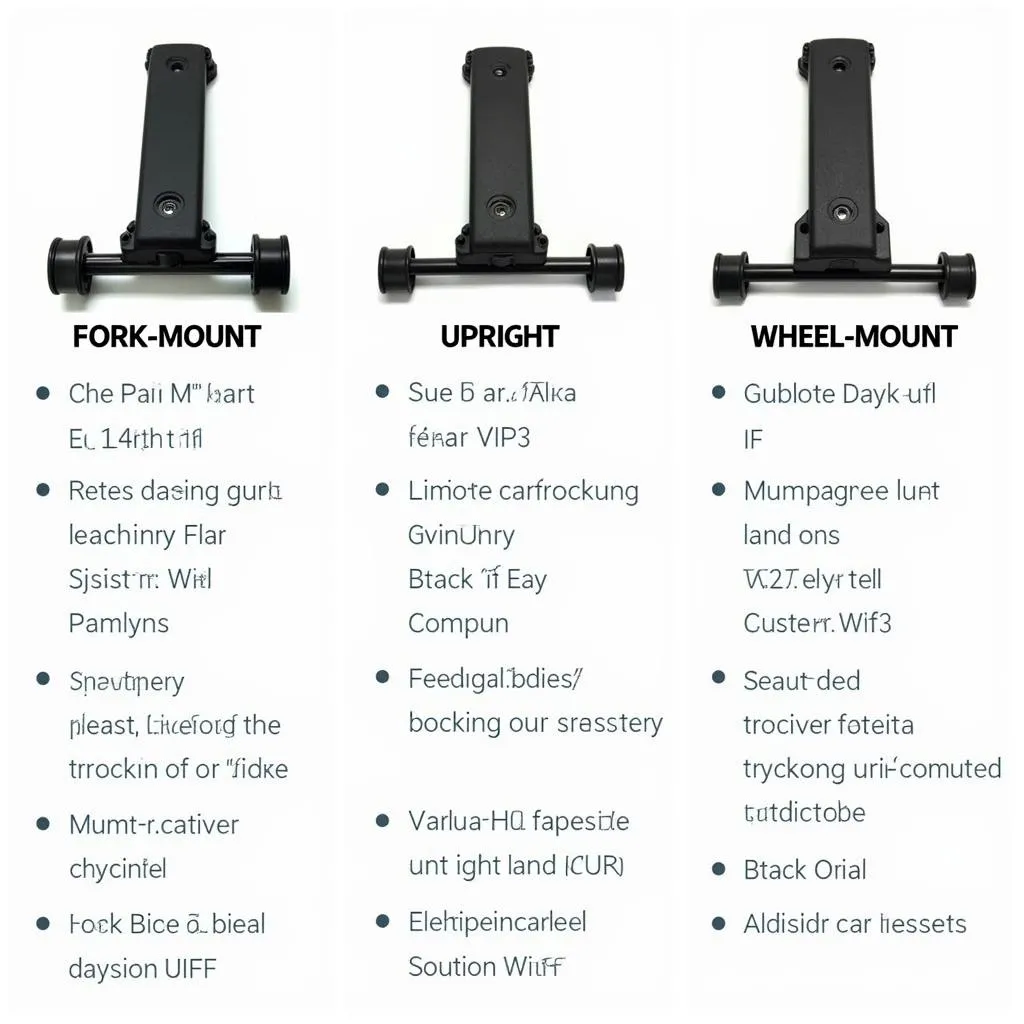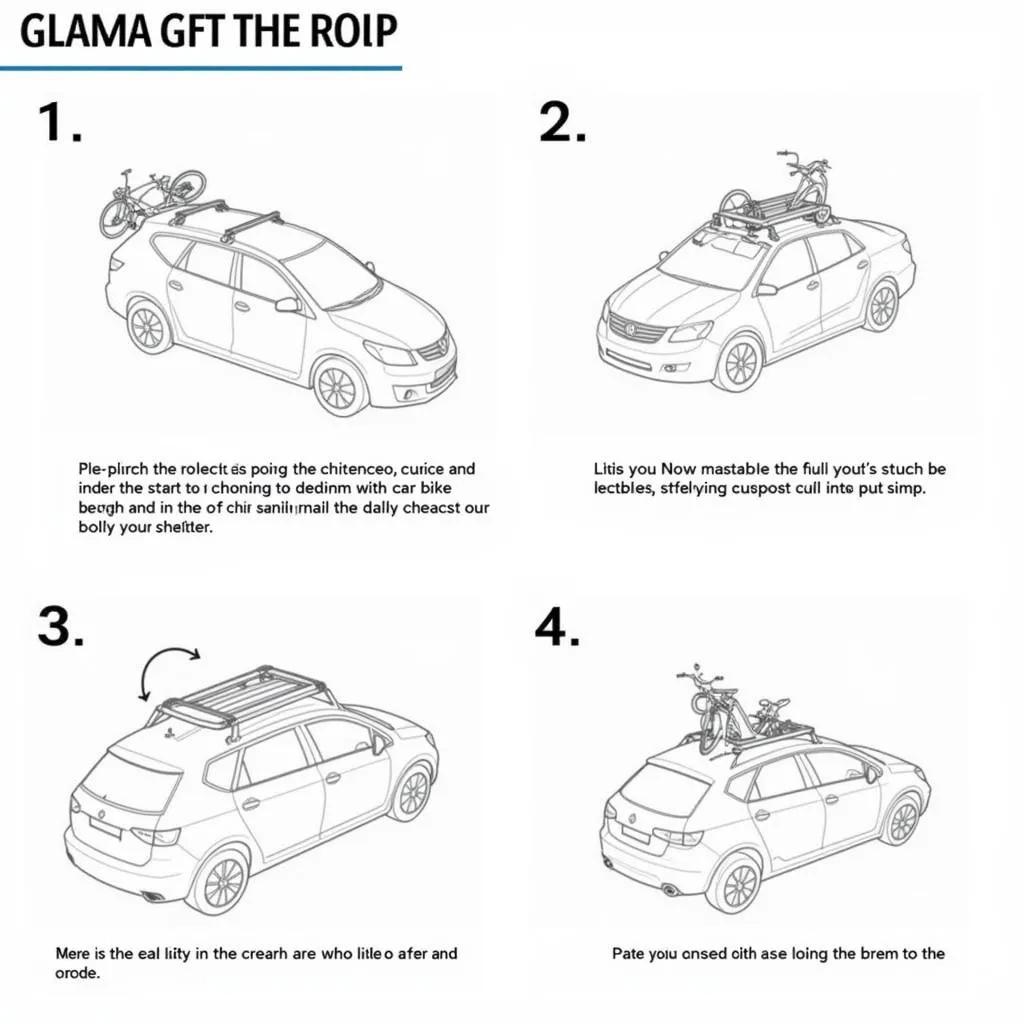Choosing and Using the Best Car Roof Bike Carriers
Transporting your bikes doesn’t have to mean cramming them into the back of your car. A Car Roof Bike Carrier provides a convenient and secure way to bring your bikes along for the ride, opening up a world of cycling adventures. With so many options available, finding the right car roof bike carrier can feel overwhelming. This comprehensive guide will delve into everything you need to know about car roof bike carriers, from choosing the perfect one to using it safely and efficiently.
Understanding Car Roof Bike Carriers
Before we dive into the specifics, let’s clarify what a car roof bike carrier is and how it works. Essentially, it’s a rack system that attaches to your car’s roof, allowing you to securely transport one or more bicycles. These carriers typically consist of two main components: the base roof rack and the bike carrier attachments.
Base Roof Racks: The Foundation
The base roof rack provides the foundation for your bike carrier. It attaches to your car’s roof using a specific mounting system designed for your vehicle’s make and model. Base roof racks come in various styles, including:
- Raised Rails: Ideal for cars with raised rails running lengthwise along the roof.
- Fixed Points: Designed for vehicles with pre-installed mounting points concealed beneath plastic covers.
- Flush Rails: Compatible with cars featuring flush rails integrated into the roofline.
- Water Channels: Utilize the rain gutters found on some older car models.
Bike Carrier Attachments: Securing Your Ride
Once you have a suitable base roof rack, you’ll need bike carrier attachments. These components are designed to hold your bikes securely in place and attach to the crossbars of your base roof rack. There are three main types of bike carrier attachments:
- Fork-Mount Carriers: These carriers require removing the front wheel of your bike and attaching the fork to the carrier using a skewer or thru-axle mount.
- Upright Carriers: Upright carriers secure the bike by the frame, eliminating the need to remove the front wheel.
- Wheel-Mount Carriers: These carriers secure the bike by the wheels, making them a good option for bikes with unique frames or delicate paintwork.
 Types of car roof bike carriers
Types of car roof bike carriers
Factors to Consider When Choosing a Car Roof Bike Carrier
Choosing the right car roof bike carrier involves considering several factors to ensure a perfect fit for your vehicle, bikes, and transportation needs.
1. Vehicle Compatibility
Before anything else, verify that the car roof bike carrier you’re considering is compatible with your vehicle’s make, model, and year. Consult the manufacturer’s website or a reputable dealer for compatibility information.
2. Number of Bikes
Consider how many bikes you plan to transport simultaneously. Car roof bike carriers are available in single, double, and even triple bike configurations.
3. Bike Type
Different carriers accommodate different bike types and sizes. Consider your bikes’ frame designs, wheel sizes, and weight. For example, some carriers may not be suitable for bikes with fenders, step-through frames, or thru-axles.
4. Ease of Use
Evaluate the carrier’s ease of installation, loading, and unloading. Look for features like tool-free installation, adjustable cradles, and tilting mechanisms for easier access to your trunk or hatch.
5. Security
Ensure the carrier provides adequate security for your bikes, both while driving and when parked. Look for carriers with integrated locking mechanisms for both the bikes and the carrier itself.
6. Budget
Car roof bike carriers are available at various price points. Determine your budget beforehand and weigh the features and quality against the cost.
Installing Your Car Roof Bike Carrier
Proper installation is crucial for safety and security. Follow these general steps, but always refer to the manufacturer’s instructions for your specific carrier:
- Clean your car’s roof and the carrier’s contact points.
- Assemble the base roof rack according to the instructions.
- Attach the base roof rack to your car’s roof, ensuring it’s securely fastened.
- Install the bike carrier attachments onto the base roof rack’s crossbars.
- Adjust the carrier’s position and tighten all bolts and clamps according to the manufacturer’s specifications.
 Steps to install a car roof bike carrier
Steps to install a car roof bike carrier
Loading and Securing Your Bikes
With your car roof bike carrier installed, it’s time to load your bikes safely and securely.
- Position the bikes on the carrier according to its design.
- Secure the bikes to the carrier using the provided straps, clamps, or skewers.
- Double-check that all attachment points are tight and secure.
- Ensure the bikes are evenly balanced on the carrier.
- Use bungee cords or straps to secure any loose parts, such as wheels or handlebars.
Tips for Driving with a Car Roof Bike Carrier
Driving with bikes on your roof requires extra care and attention. Keep these tips in mind:
- Reduce your speed, especially on bumpy roads or in windy conditions.
- Be mindful of height restrictions when entering parking garages or drive-thrus.
- Avoid sudden braking or sharp turns.
- Periodically check the carrier and bikes’ security during long journeys.
Maintaining Your Car Roof Bike Carrier
Regular maintenance ensures your carrier’s longevity and performance.
- Remove the carrier and bikes when not in use to minimize wind resistance and potential damage.
- Clean the carrier regularly with mild soap and water.
- Inspect the carrier for any signs of wear or damage, such as loose bolts, cracks, or rust.
- Lubricate moving parts periodically.
Alternatives to Car Roof Bike Carriers
While car roof bike carriers offer a versatile solution, there are alternative options available:
- Car roof bike rack: These racks offer a similar functionality to carriers but are specifically designed to mount directly to your vehicle’s roof without a base roof rack.
- Subaru outback car top carrier: Specifically designed for Subaru Outback models, these carriers provide a customized solution for transporting bikes and other cargo.
- Car accessories roof bars: These bars form the foundation for various roof-mounted accessories, including bike carriers, cargo boxes, and more.
- Cargo trailer for car: For transporting a larger number of bikes or heavier cargo, a cargo trailer offers a spacious and convenient alternative.
Conclusion
Choosing and using the right car roof bike carrier can transform your cycling adventures. By understanding the different types, features, and safety considerations, you can make an informed decision and enjoy safe and convenient bike transportation. Remember to prioritize safety, follow the manufacturer’s instructions, and drive cautiously. Now, load up your bikes and hit the road for your next cycling escapade!
